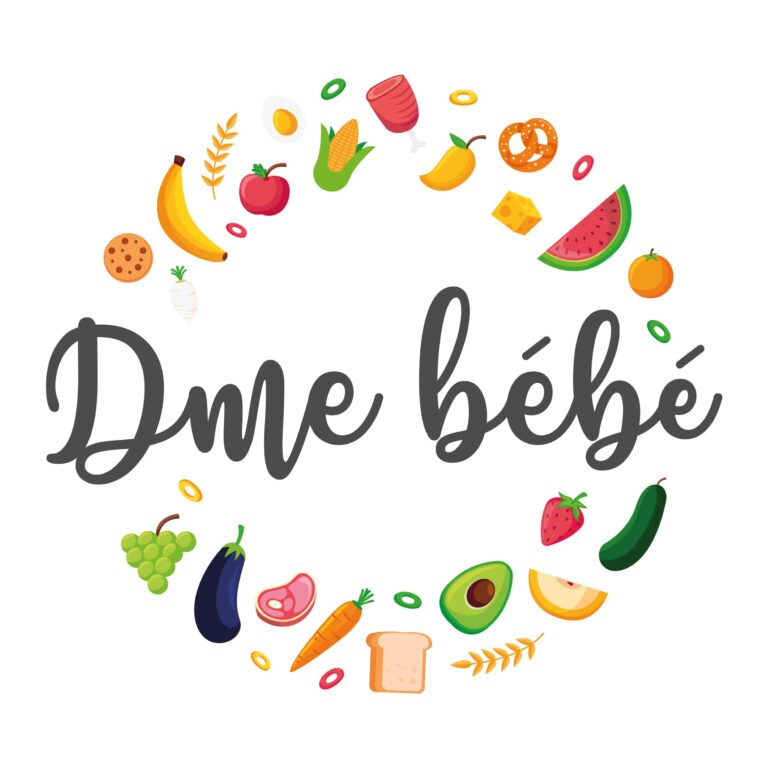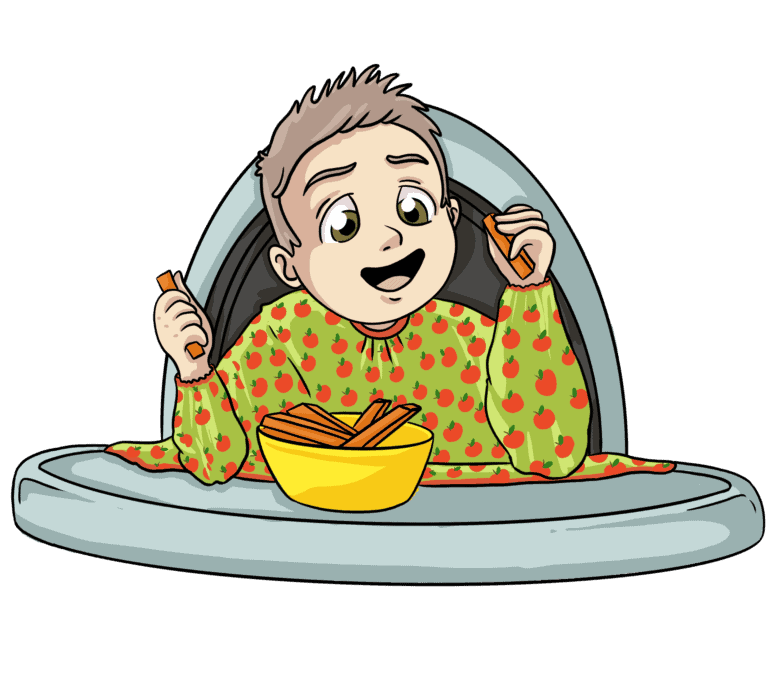Fear of suffocation is the greatest reluctance among parents when we talk about BLW . You just have to imagine baby eating songs so that our hearts get carried away! Rest assured, by offering food with textures and formats adapted to baby's capacities, there is no more risk of suffocation in BLW than in classic diversification . The suffocation is often confused with the famous nausea reflex which is completely normal and natural.
Building a big blow, it is by being properly informed that you can offer songs in all serenity to your little one.
The nausea reflex (Gag Reflex in English)
The nauseating reflex aims to protect the respiratory tract when baby learns to manage the pieces. It is part of the normal baby development.
At the birth of baby, his mouth is designed so as not to be able to swallow solid foods. Indeed, in all babies, there is a nauseous reflex on the tip of the language, making them reject food from the first contact with it. Gradually, the nausea reflex will go backwards to the back of the throat. It is also to make it go back by dint of solicitations that baby goes through an oral exploration phase where he discovers everything with the mouth.
As soon as a too large food enters his mouth, baby spontaneously has a high-heart. It can sometimes seem very impressive, and yet your baby is not choking. This high-heart is a vomiting reflex which allows him to understand that he has put too big pieces in his mouth. Let go, breathe a big blow, and above all, observe! Most of the time, baby will start eating the same piece again as if nothing had happened! When a 6 month old baby triggers this reflex, the food is still in the mouth, far from its airways.
It will therefore be important to let baby explore with his mouth to help him back up his nausea reflex.
The signs of the nausea reflex
Here are some signs to recognize the nausea reflex :
- Baby blushes
- He coughs
- He leans forward as if to a haw on
- He drools
- Sometimes it vomits (the nausea reflex can go as far as vomiting)
My advice to approach the situation calmly
- Stay calm, reassuring and close to baby
- Offer a little water once he returned to his minds without forcing him
- Do not give him a tape in the back
- Do not jump on him, shouting
- Do not get the song in your mouth
Generally, baby does not need help and can expel the food that bothers him alone. Make sure it can breathe properly despite the Haut-le-Coeur.
By acting as serenely as possible, your little one will be relaxed and will be able to continue the discovery of foods in their raw form without fear. You might also without wanting to push the embarrassing piece further in the baby's throat.
The most important thing is to trust your little one!
The false road
The false road is when the food will accommodate in the bad duct (at the entrance to the airways). Baby then begins to cough to redirect the food to the digestive paths.
The signs of the false road
Here are some signs to recognize the false road :
- Baby suddenly coughs
- He turns red
How to react to a false road?
- Stay calm, reassuring and close to baby
- Check that baby keeps a good vertical position
- Encourage baby to cough
- Do not give him a tape in the back
Suffocation
When baby is choking, there is a complete obstruction of the respiratory tract with a food blocked in the trachea.
How to recognize a suffocation?
- Baby is unable to issue the slightest sound, cough or cry
- He encounters difficulties to breathe
- His skin and lips can be blue
How to react to suffocation?
- Call emergencies as quickly as possible
- Practice first aid


A response